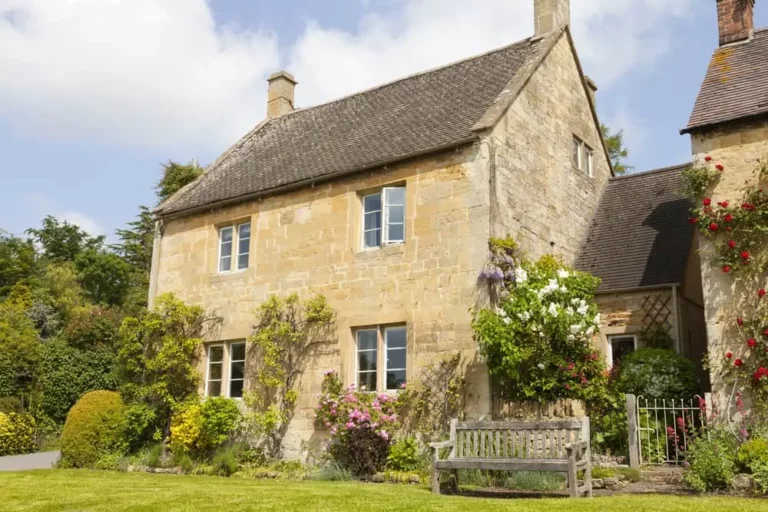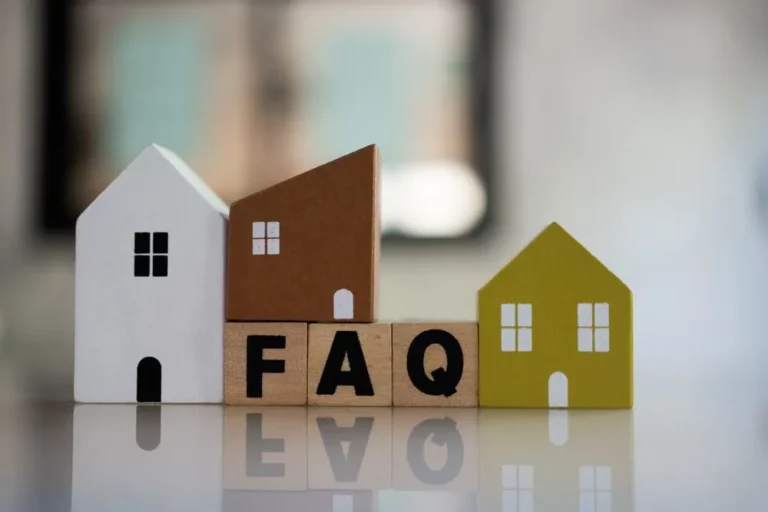What's on this page
When you arrange home insurance, you will be asked about the age of the property. Most people don't know this at the time, so rather than guess (which could cause you issues when making a claim), we have written this guide that explains how to find out when a house was built.
To navigate the guide, you can click on any of the items in 'Contents' to jump to the section that interests you.
Before we get into how to find a property’s age, it’s worth noting that the build year can also affect your home insurance options — particularly if the property is empty.
Insuristic has two dedicated policies designed to protect estates and homeowners:
You can learn more by clicking the link above and get an online quote in just a few minutes.

Whether you're living in a brand-new home or a property steeped in history, determining your property's age is an essential aspect when purchasing home insurance.
Insurance providers use on this information to assess your property risk and likelihood of a claim, which will also influencing the insurance premium you'll pay.
The age is important to insurers as older properties often exhibit unique construction techniques and materials that may not be readily available or require specialised expertise for repairs. These factors can significantly increase the cost of repairs, making buildings insurance more expensive for older properties.
There are several factors that contribute to higher rebuild costs for older properties in the UK:
Materials: Older properties in the UK may be constructed using materials that are no longer in production or that have become more expensive. For example, lead pipes may be used for plumbing, and asbestos may be present in insulation and other materials. These materials can be difficult to remove and dispose of properly, which can drive up the cost of rebuilding.
Structural Features: Older properties in the UK may have unique structural features that require specialised expertise to repair. For example, older homes in the UK may have timber-framed construction, which can be more difficult to repair than modern concrete and steel construction. They may also have decorative elements, such as cornicing and moldings, that would need to be replicated.
Labor: Experienced and skilled tradespeople may be more difficult to find to work on older properties in the UK, which can drive up labor costs. This is because older homes in the UK may have more complex construction and may require specialized skills to repair. Additionally, the UK's Building Regulations are stricter than in other countries, which can add to the complexity and cost of construction.
Many people guess the age of their property when arranging insurance. It is likely to be OK if you are only a couple of years out in your guess. But be aware, if that guess puts you in a different decade, this too can influence things as building standards have changed many times over the centuries, even during the 20th and early 21st Century
But as the year of build reflects the insurers pricing, they could be within their right to reduce the amount of any claim by the percentage difference they charged you when buying the policy on the wrong information. If the year of build you provide is significantly out, they could void the policy because you have misrepresented the risk to them.

Whilst there are lots of options to try when looking how to find out when a house was built, this way is perhaps the easiest.
Use a free property checking service, like the one provided by Property Checker. Here you can check details of your property price, lease end date, last EPC data and more.
But more importantly, they provide a free service to check when a house was built. You can find it on the Property Checker website. Whilst we can't vouch for its accuracy, it is based on HM Land Registry data so it should be reasonably accurate.
If you can't find the date of build on there, read on, there are a number of options open to you below.
Your house title deeds (sometimes called a title register) not only provides proof of ownership, it provides other useful information about the house, including the year when it was guilt.
If you have a property in England or Wales and you can't find a copy of the title deeds you can buy a copy from the HM Land Registry for as little as £3 for a downloadable copy. If you need the original to be sent in the post, each copy will be cost you £7.
For properties in other areas of the UK go to:
Home surveys can be useful to check when a house was built. If you or a previous owner have ever instructed a home survey (like a home buyers survey) you will find the year the house was built within it.
Another way to check when a house was built would be to check your mortgage offer. Your mortgage documents will include information on the property including when it was built.
You can contact your local authority to check when a house was built. The local authority will hold information on your property, such as when planning permission was granted. So it is worth contacting them to see if they can provide the date your house was built.
If the house is old, here are a list of resources that can help check when a house was built:
Try local archives: as they can be useful to search county record offices, your local library and parish records. These are all good sources of data for your local area and may contain the information you need.
The National Archives: are an online record
For properties likely to be build before 1862, check out the HM Land Registry: 1862 Act Register. This was the UK governments first attempt to record property ownership information. It contains almost 2,000 properties in volumes of handwritten and typed pages.
Historical Ordnance Survey Maps - might help you understand when your property first appeared.
The national sensus - is another useful resource for finding out when a property first appeared in the records.
If the property is likely to be listed, you can search the National Heritage List for England, or the Cadw records for property in Wales or Historic Environment Scotland. Other resources like English Heritage, National Trust and Victorian Society can point you in the right direction.
The chances are that if the property was built after 1925, you should be able to use the suggestions above to easily check when a house was built.
If you've exhausted the resources above, don't fret. Architectural cues can offer valuable insights into your home's historical timeline.
Tudor Era (1485 - 1603)
Small windows, timber frame construction, upper floor projecting over the ground floor
Steeply pitched roofs, often with decorative bargeboards
Jacobean Era (1603 - 1714)
Plain, often flat-fronted exteriors
Brick or stone walls, with occasional timber framing
Gothic-style windows and doors, often with arched or pointed tops
Steeply pitched roofs, often with decorative chimney stacks
Large living rooms with wide fireplaces
Georgian Era (1714 - 1820)
Tall, rectangular sash windows
Central front door often with a fanlight
Large fireplaces with ornate surrounds
Smooth, stuccoed or brick exteriors
Symmetry and proportion are key features
Victorian Era (1837 - 1901)
Bay windows
High ceilings
Sloping roofs, often with decorative verges
Red or coloured brickwork
Ornamental window surrounds and porches
Ornate interior details, such as stained glass, paneling, and fireplaces
Edwardian Era (1901 - 1914)
Broader build, often with an asymmetrical layout
Wide hallways
Dual-aspect rooms with windows facing both front and back
Hipped roofs with dormer windows
Simple, elegant style
Post-World War I Era (1918 - 1939)
Simple design, often with a flat roof and large bay windows
Bare brick or pebble-dashed exteriors
Semi-detached or terraced houses
Open-plan living spaces with large windows
By carefully examining these architectural features, you can gain a clearer picture of your home's historical context and the unique character that has evolved over time.
But remember: Don't guess the age of an old property for insurance purposes, seek professional advice.
The only way for you accurately check when a house was built would be to find a RICS Surveyor. They would be able to help you date your house as well as provide a comprehensive survey on its condition and rebuild value.

We have covered most of the solutions to this question within this guide but here are three other ideas to check when a house was built:
You could consider reaching out to nearby neighbors for information.
Ask the previous owners whether they’ve any survey results or other information to help you learn when a house was built.
Another avenue worth exploring is investigating whether your street was directly impacted by World War Two bombings. According to the Guardian, in London alone, 116,000 buildings were destroyed or damaged beyond repair. So it is likely that many properties in major UK cities were rebuilt after the war. This information could help pinpoint the time your home might have been rebuilt, especially if its appearance differs from others on the same street.
Knowing your UK home's construction date is vital for:
Architectural Changes: Historical significance may restrict alterations, especially in heritage-designated properties.
Insurance Impact: The age of your house can affect insurance costs, particularly in listed buildings with stringent repair regulations.
Materials Planning: Recognising the construction era is crucial for sourcing specific materials, avoiding costly adjustments.
Structural Maintenance: Essential for tasks like replacing period-specific elements, such as vintage roof tiles.
Understanding your property's age is practical, influencing modifications, insurance expenses, and efficient repairs.
While the data provided by HM Land Registry is likely accurate, it may not have all the information you need. If your home was built before 1940, it may be harder to identify exactly when it was built.
If your home is a new-build, the data should be accurate as you can get the information straight from the property's developer.
Indeed, the age of your home can significantly impact your home insurance premiums, primarily due to the higher rebuild costs associated with older properties. However, other factors, such as your postcode and the security measures in place at your residence, can also influence the pricing of your insurance.
In general, this tends to be the norm. Homes with period features, constructed using materials or methods that are challenging to obtain or reproduce in the present day, typically incur higher insurance costs. Additionally, if your residence is listed or boasts traditional elements such as a thatched roof, securing specialised insurance policies may be necessary.
Despite their charming aesthetics, character, and rich history, older properties come with certain risks. If you're considering purchasing an old house or period property, it's essential to be aware of potential issues:
Asbestos - Buildings constructed before the year 2000 may contain materials with asbestos.
Lead pipes - Homes built before 1970 might have lead pipes, identifiable by a dull grey and soft metal appearance around the internal stop tap.
Woodworm - Period properties may have experienced damp conditions conducive to woodworm infestations. While signs of past infestations may not always indicate structural risks, untreated active woodworm can harm old timber frames.
Damp and mould - Older buildings, lacking the damp-proofing measures found in newer homes, are particularly susceptible to damp and mould issues.
Due to these potential concerns, insuring historic properties can be more costly.
I hope you this guide has helped you learn how to find out when a house was built. You can find a range of other useful guides in our knowledge hub.

Hi, I'm Rob, CEO and Founder of Insuristic. My mission is to make insurance easier to understand and buy online.
I hold an Advanced Diploma in Insurance (ACII) which demonstrates I have a solid technical understanding of Insurance and have committed to continuous professional development. I am also a member of the Chartered Insurance Institute and hold the a Chartered Insurance Broker status.
Over the last 27 years, I have worked for insurers, insurance brokers and insurance technology businesses, specialising in product, sales and marketing.
You can find out more about me on my author page.
Follow me on Social

Insuristic Limited is an Appointed Representative of SJL (Worcester) Ltd, who are authorised and regulated by the Financial Conduct Authority with the reference number 763599. This can be checked by visiting https://register.fca.org.uk/s/.
Registered Office: Unit 2, 262 Walsall Road, Cannock, England, WS11 0JL. Registered in England and Wales No: 13926650.
Insuristic is a registered trademark. ©Copyright 2023 Insuristic Limited. All Rights Reserved.
Please Note: Our broking team at SJL Insurance will need to talk to you to discuss your requirements. This is an advised service.
Please Note: Our broking team at SJL Insurance will need to talk to you to discuss your requirements. This is an advised service.
Please Note: Our broking team at SJL Insurance will need to talk to you to discuss your requirements. This is an advised service.
Please Note: Our broking team at SJL Insurance will need to talk to you to discuss your requirements. This is an advised service.
Please Note: Our broking team at SJL Insurance will need to talk to you to discuss your requirements. This is an advised service.
Please Note: Our broking team at SJL Insurance will need to talk to you to discuss your requirements. This is an advised service.